- Home
- H. P. Lovecraft
The Watchers Out of Time Page 2
The Watchers Out of Time Read online
Page 2
But Gamwell, too, was dissatisfying. Once again there was nothing definite, nothing concrete, no single fact—only an impression, a memory, of someone, I felt, Gamwell had disliked for no reason he could name. Perhaps some professional jealousy he did not care to name biased his judgment.
I next sought the neighbors, but I found them for the most part younger people who had little memory of Dr. Charriere, except as someone whom they wished elsewhere, for he had an abominable traffic in lizards and the like, and none knew what diabolic experiments he performed in his laboratory. Only one among them was of advanced age; this was an old woman, a Mrs. Hepzibah Cobbett, who lived in a little two-storey house directly behind the Charriere garden wall, and I found her much enfeebled, in a wheel chair, guarded over by her daughter, a hawk-nosed woman whose cold blue eyes looked at me askance from behind her pincenez. Yet the old woman spoke, starting to life at mention of Dr. Charriere’s name, realizing that I lived in the house.
“Ye’ll not live there long, mark my words. It’s a devil’s house,” she said with some spirit that degenerated rapidly into a senile cackling. “Many’s the time I’ve laid eyes on him. A tall man, bent like a sickle, with a wee tuft of beard like a goat’s whisker on his chin. And what was it that crawled about at his feet I could not see? A long, black thing, too big for a snake—though ’twas snakes I thought of every time I set eyes on Dr. Charriere. And what was it screamed that night? And what barked at the well?—a fox, indeed, I know a fox and a dog, too. Like the yawping of a seal. I’ve seen things, I tell ye, but nobody’ll believe a poor old woman with one foot in her grave. And ye—ye won’t either, for none does.”
What was I to make of this? Perhaps the daughter was right when she said, as she showed me out, “You must overlook mother’s ramblings. She has an arteriosclerotic condition which occasionally makes her sound quite weak-minded.” But I did not think old Mrs. Cobbett weak-minded, for her eyes snapped and sparkled when she talked, quite as if she were enjoying a secret joke of proportions so vast that its very outlines escaped her keeper, the grim daughter who hovered ever near.
Disappointment seemed to await me at every turn. All avenues of information yielded little more together than any one had yielded. Newspaper files, library, records—all that was to be found was the date of the erection of the house: 1697, and the date of the death of Dr. Jean-Francois Charriere. If any other Charriere had died in the city’s history, there was no mention of him. It was inconceivable that death had stricken all the other members of the Charriere family, predeceasing the late tenant of the house on Benefit Street, away from Providence, and yet it must have been so, for there was no other feasible explanation.
Yet there was one additional fact—a likeness of Dr. Charriere which I discovered in the house; though no name was appended to it where it hung in a remote and almost inaccessible corner of an upstairs room, the initials J. F. C. identified it beyond reasonable doubt. It was the likeness of a thin-faced ascetic, wearing a straggly goatee; his face was distinguished by high cheekbones, sunken cheeks, and dark, blazing eyes. His aspect was gaunt and sepulchral.
Thus, in the absence of other avenues of information, I was driven once again to the papers and books left in Dr. Charriere’s study and laboratory. Hitherto, I had been much away from the house, in the pursuit of my inquiry into Dr. Charriere’s background; but now I was as much confined to the house as I had previously been away from it. Perhaps it was because of this confinement that I began to grow more keenly aware of the aura of the house—both in a psychic and a physical sense. That unhappy professional man and his family who had remained here but a month and then left because of the smells abounding had perhaps conditioned me to smell the house, and now, for the first time, I did indeed become sharply cognizant of various aromas and musks, some of them typical of old houses, but others completely alien to me. The dominant one, however, was identifiable; it was a musk I had encountered several times before—in zoos, swamps, along stagnant pools—almost a miasma which suggested most strongly the presence of reptiles. It was not impossible that reptiles had found their way through the city to the haven of the garden behind the Charriere house, but it was incredible that they should have persisted in such numbers as to taint the very air of the place. Yet, seek as I might, I could find no source of this reptilian musk, inside or out, though I fancied once that it emanated from the well, which was doubtless a result of an illusory conviction.
This musk persisted, and it was especially strong whenever rain fell, or a fog formed, or dew lay on the grass, as might have been expected, moisture heightening all odors. The house was moist, too; its short-lived tenantry had been explained in part by this, and in this, certainly, the renter had not been in error. I found it often unpleasant, but not disturbing—not half so disturbing as other aspects of the house.
Indeed, it was as if my invasion of the study and laboratory had stirred the old house to protest, for certain hallucinations began to occur with annoying regularity. There was, for one, the curious barking sound which seemed to emanate from the garden late at night. And, for another, the illusion that an oddly bent, reptilian figure haunted the darkness of the garden outside the study windows. These and other illusions persisted—and I, in turn, persisted in looking upon them as hallucinatory—until that fateful night when, after hearing a distinct sound as of someone bathing in the garden, I woke from my sleep convinced that I was not alone in the house, and, putting on my dressing-robe and slippers, I lit a lamp and hurried to the study.
What I saw there must certainly have been inspired by the nature of my inquiry into the late Dr. Charriere’s papers; that it was a figment of a nightmare, I could not doubt at the moment, though I caught but a faint glimpse of the invader; for there was an invader in the study, and he made off with certain papers belonging to the Charriere estate, but as I saw him in the brief glimpse I had of him in the wan yellow light of the lamp held overhead and partially blinding me he seemed to glisten, he shone blackly, and he seemed to be wearing a skin-tight suit of some rough, black material. I saw him for only an instant, before he leapt through the open window into the darkness of the garden; I would have followed then, had it not been for the disquieting things I saw in the light of the lamp.
Where the invader had stood there were the irregular marks of feet—of wet feet—and more, of feet which were oddly broad, the toes of which were so long-nailed as to leave the marks of those nails before each toe; and where he had bent above the papers there was the same wetness; and over all there hung the powerful reptilian musk I had begun to accept as an integral part of the house, so powerful, indeed, that I almost reeled and fainted.
But my interest in the papers transcended fear or curiosity. At that time, the only rational explanation which occurred to me was that one of the neighbors, who had some animus against the Charriere house and were constantly agitating to have it torn down, must have come from swimming to invade the study. Farfetched, yes, certainly. But could any other explanation readily account for what I saw? I am inclined to think not.
As for the papers, certain of them were undeniably gone. Fortunately, these were the very ones I had finished with; I had put them into a neat pile, though many were not consecutive. I could not imagine why anyone would have wanted to take them, unless someone other than myself were interested in Dr. Charriere, perhaps with a view to laying claim to the house and property; for these papers were painstaking notes about the longevity of crocodiles and alligators, as well as of related reptiles. It had already begun to be plainly evident to me that the late doctor had been studying reptilian longevity with almost obsessive devotion, and with a view, clearly, to learning how man might lengthen his own life. If the secrets of reptilian longevity had been revealed to Dr. Charriere, there was nothing in his papers thus far to show that it had, though I had come upon two or three disquieting suggestions of “operations” performed—on whom was not set down—with a view to increasing the life span of the subject.
&nb
sp; True, there was one variant vein of notes in what I assumed to be Dr. Charriere’s handwriting, treated as a related subject, but, to me, one at variance from the more or less scientific inquiry into the long life of reptiles. This was a sequence of cryptic references to certain mythological creatures, particularly one named “Cthulhu,” and another named “Dagon,” who were evidently deities of the sea in some ancient mythology completely unknown to me; and suggestions of long-lived creatures (or people?) who served these ancient Gods, named the “Deep Ones,” evidently amphibious creatures living in the depths of the seas. Among these notes were photographs of a singularly hideous monolithic statue, of a distinctly saurian cast of feature, labeled “E. coast Hivaoa Is., Marquesas. Object of worship?”, and of a totem pole of the Northwest Coast Indians of a disturbingly similar workmanship, also reptilian in aspect, this one being marked, “Kwakiutl Indian totem. Quatsino Sound. Sim. t. erected by Tlingit Inds.” These curious notes existed as if to show that Dr. Charriere was not averse to examining rites of ancient sorceries and primitive religious beliefs in an effort to bring about some earnestly desired goal.
What that goal might be was soon evident enough. Dr. Charriere had not been interested in the study of longevity for its sake alone; no, he had also wished to prolong his own life. And there were certain upsetting hints in the writings he had left behind him to suggest that in part, at least, he had succeeded beyond his wildest dreams. This was a disturbing discovery to make because it recalled again the curious history of that first Jean-Francois Charriere, also a surgeon, about whose later years and death there was fully as much mystery as there was about the birth and early years of the late Dr. Jean-Francois Charriere, who died in Providence in 1927.
The events of that night, though not frightening me too badly, did result in my purchasing a powerful Luger pistol in a second-hand shop, as well as a new flashlight; the lamp had impeded me in the night, which a flashlight would not do in similar circumstances. If indeed I had a visitor from among the neighbors, I could be sure that the papers he had taken would no more than whet his appetite, and sooner or later he would return. Against that contingency I meant to be fully prepared, and if again I caught a marauder in the study of the house I had leased, I would not hesitate to shoot if my demand to stop where he was were not heeded. I hoped, however, that I would not have occasion to use the weapon in such a manner.
On the next night I resumed my study of Dr. Charriere’s books and papers. The books had surely at one time belonged to his forebears, for many of them dated back through the centuries; among them was a book translated into the French from the English of R. Wiseman, testifying to some connection between the Dr. Jean-Francois Charriere who had studied in Paris under Wiseman, and that other surgeon of similar name who had, until recently, lived in Providence, Rhode Island.
They were en masse a singular hodge-podge of books. They seemed to be in every known language, from French to Arabic. Indeed, I could not hope to translate a majority of the titles, though I could read French and had some smattering of the other Romance languages. I had at that time no understanding of the meaning of such a title as Unaussprechlichen Kulten, by Von Junzt, though I suspected that it was akin to the Count d’Erlette’s Cultes des Goules, since it stood next to that book on the shelf. But then, books on zoological subjects stood beside weighty tomes about ancient cultures; they bore such titles as An Inquiry Into the Relationship of the Peoples of Polynesia and the Indian Cultures of the South American Continent, with Special Reference to Peru; The Pnakotic Manuscripts, De Furtivis Literarum Notis, by Giambattista Porta; Thicknesses’s Kryptographik; the Daemonolatreia of Remigius; Banfort’s The Saurian Age; a file of the Aylesbury, Massachusetts, Transcript; another of the Arkham, Massachusetts, Gazette—and the like. Some of these books were certainly of immense value, for many of them dated as far back as from 1670 to 1820, and, though all showed much wear from use, all were still in relatively good condition.
These books, however, meant comparatively little to me. In retrospect, I am constrained to believe that, had I examined them more attentively, I might have learned even more than I did; but there is a saying that too much knowledge of matters men are better off without knowing is even more damning than too little. I soon gave over my examination of the books because I discovered, pressed in among them on the shelves, what seemed at first glance to be a diary or journal, but was, on closer examination, manifestly a notebook, for the entries dated too far back to have encompassed Dr. Charriere’s span of years. All were written in a crabbed, tiny script, which was most certainly the late surgeon’s, and, despite the age of the first pages, all had been written by the same hand, suggesting that Dr. Charriere had set down these notes in a kind of rough chronology, very probably from some earlier draft. Nor were they jottings alone; some were illustrated with crude drawings which were nevertheless effective, as are on many occasions the primitive paintings of untutored artists.
Thus, upon the very first page of the hand-bound manuscript I came upon this entry: “1851. Arkham. Aseph Goade, D.O.” and with it a drawing, presumably of the said Aseph Goade, emphasizing certain aspects of his features, which were batrachian in essence, for they were distinguished by an abnormally wide mouth, with peculiar leathery lips, a very low brow, strangely webbed eyes, and a generally squat physiognomy, giving them a distinctly and unmistakably frog-like appearance. This drawing took up the majority of the page, and the jotting accompanying it I assumed to be a notation of an encounter—evidently in research, for it could hardly have been in the flesh—with a sub-human type—(could the “D.O.” have been a reference to the “Deep Ones,” mention of which I had previously encountered?), which, doubtless, Dr. Charriere looked upon as a verification of the trend of his research, a trend to support a belief he probably held that some kinship with batrachia, and hence very probably also saurians, could be traced.
To that end, too, there were other jottings. Most of them were so vague—perhaps purposely so—as to seem to me at that first examination of them virtually meaningless. What was I to make of a page like this, for instance?
“1857. St. Augustine. Henry Bishop. Skin very scaly, but not ichthyic. Said to be 107 years old. No deteriorative process. All senses still keen. Ancestry uncertain, but Polynesian trade in background.
“1861. Charleston. Balacz family. Crusted hands. Double jaw construction. Entire family manifesting similar stigmata. Anton 117 years old. Anna 109. Unhappy away from water.
“1863. Innsmouth. Marsh, Waite, Eliot, Gilman families. Captain Obed Marsh a trader in Polynesia, married to a Polynesian woman. All bearing facial characteristics similar to Aseph Goade’s. Much secretive living. Women seldom seen in streets, but at night much swimming—entire families, all the rest of the town keeping to their houses, swimming out to Devil Reef. Relationship to D.O. very marked. Considerable traffic between Innsmouth and Ponape. Some dark religious worship.
“1871. Jed Price, carnival entertainer. Billed as ‘Alligator Man.’ Appears in pool of alligators. Saurian look. Long lantern jaw. Said to have pointed teeth, but whether real or filed unable to determine.”
This was the general tenor of the jottings in the book. Their range was continental—there were notes referring to Canada and Mexico as well as the eastern seaboard of North America. From them, Dr. Jean-Francois Charriere began to emerge as a man obsessed with a strange compulsion—to establish proof of the longevity of certain human beings seemingly bearing some kinship to saurian or batrachian ancestors.
Admittedly, the weight of the evidence gathered, could one have accepted it all as fact, rather than as wishfully colored accounts of people with some marked physical defect, seemed to lend to Dr. Charriere and his belief a strange and provocative corroboration. Yet the surgeon had not often gone beyond the realm of pure conjecture. What he sought seemed to be the connecting link among the various instances which had come to his notice. He had sought this link in three bodies of lore. The most familiar of these was the vo
du legendry of Negro culture. Next to it, in familiarity, stood the animal worship of ancient Egypt. Finally, and most important, according to the surgeon’s notes, was a completely alien culture which was as old as earth, nay, older, involving ancient Elder Gods and their terrible, unceasing conflict with equally primeval Old Ones who bore such names as Cthulhu, Hastur, Yog-Sothoth, Shub-Niggurath, and Nyarlathotep, and who were served in turn by such curious beings as the Tcho-Tcho People, the Deep Ones, the Shantaks, the Abominable Snow Men, and others, some of whom appeared to have been a sub-order of human being, but others of which were either definite mutations or not human at all. All this fruit of Dr. Charriere’s research was fascinating, but in no case had he adduced a definite, provable link. There were certain saurian references in the Vodu cult; there were similar connections to the religious culture of ancient Egypt; and there were many obscure and tantalizing suggestions connecting the saurians to the Cthulhu myth-pattern, ranging far deeper into the past than Crocodylus and Gavialis, embracing Tyrannosaurus and Brontosaurus, Megalosaurus, and other Mesozoic reptilia.
In addition to these interesting notes, there were diagrams of what seemed to be very odd operations, the nature of which I did not fully comprehend at that time. These were apparently copied out of ancient texts, particularly one given frequently as source entitled, De Vermis Mysteriis, by Ludvig Prinn, another of those obscure references completely foreign to me. The operations themselves suggested a raison d’être too astounding to accept on face; one of them, for instance, was designed to stretch the skin, consisting of many incisions made to “permit growth.” Yet another was a simple cross-incision made at the base of the spine for the purpose of “extension of the tailbone.” What these fantastic diagrams suggested was too horrible to contemplate, yet it was part and parcel, surely, of the strange research conducted for so many years by Dr. Charriere, whose seclusion was thus readily explicable, since his was a project which could only be conducted in secret lest it bring down upon him the scorn and laughter of his fellow scientists.

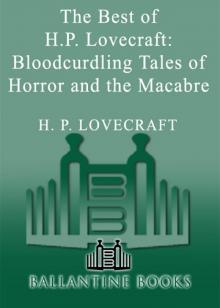 The Best of H.P. Lovecraft
The Best of H.P. Lovecraft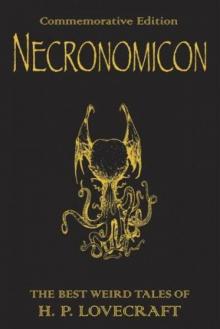 The Definitive H.P. Lovecraft: 67 Tales Of Horror In One Volume
The Definitive H.P. Lovecraft: 67 Tales Of Horror In One Volume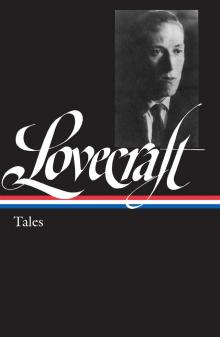 The Complete Works of H.P. Lovecraft
The Complete Works of H.P. Lovecraft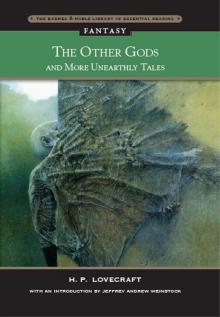 Other Gods and More Unearthly Tales
Other Gods and More Unearthly Tales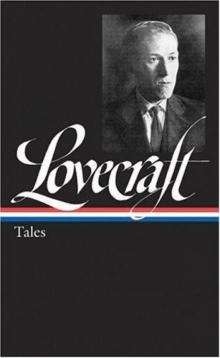 Lovecraft's Fiction Volume I, 1905-1925
Lovecraft's Fiction Volume I, 1905-1925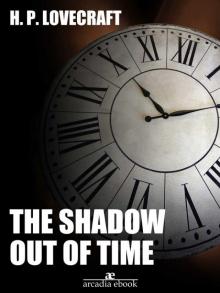 The Shadow Out of Time
The Shadow Out of Time The Shunned House
The Shunned House Lovecraft's Fiction Volume II, 1926-1928
Lovecraft's Fiction Volume II, 1926-1928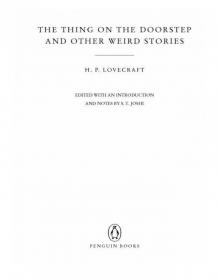 The Thing on the Doorstep and Other Weird Stories
The Thing on the Doorstep and Other Weird Stories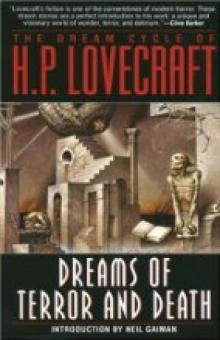 Dream Cycle of H. P. Lovecraft: Dreams of Terror and Death
Dream Cycle of H. P. Lovecraft: Dreams of Terror and Death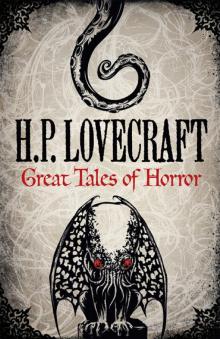 Great Tales of Horror
Great Tales of Horror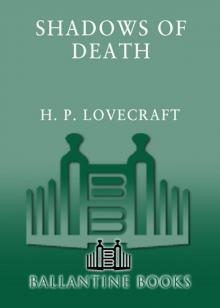 Shadows of Death
Shadows of Death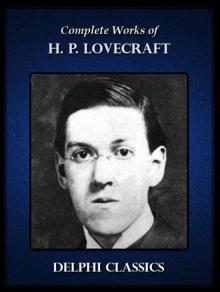 Delphi Complete Works of H. P. Lovecraft (Illustrated)
Delphi Complete Works of H. P. Lovecraft (Illustrated)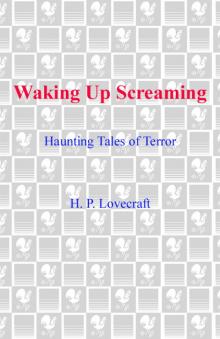 Waking Up Screaming: Haunting Tales of Terror
Waking Up Screaming: Haunting Tales of Terror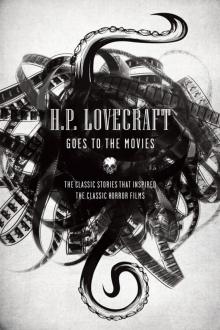 H.P. Lovecraft Goes to the Movies
H.P. Lovecraft Goes to the Movies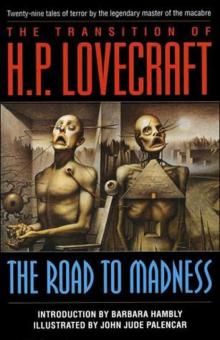 The Road to Madness
The Road to Madness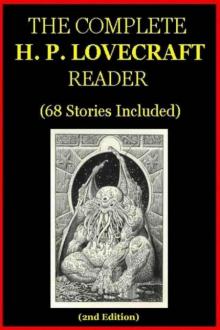 The Complete H.P. Lovecraft Reader (68 Stories)
The Complete H.P. Lovecraft Reader (68 Stories)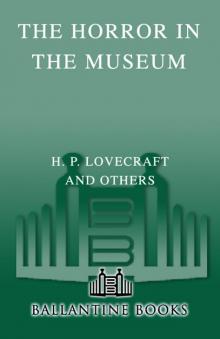 The Horror in the Museum
The Horror in the Museum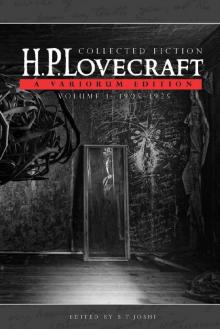 Collected Fiction Volume 1 (1905-1925): A Variorum Edition
Collected Fiction Volume 1 (1905-1925): A Variorum Edition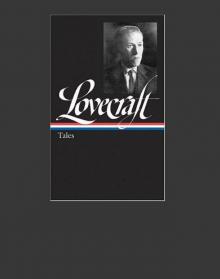 Lovecrafts_Fiction, vol.I_1905-1925
Lovecrafts_Fiction, vol.I_1905-1925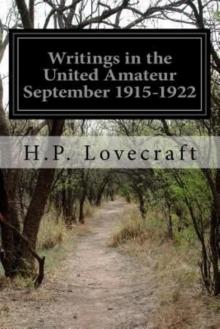 Writings in the United Amateur, 1915-1922
Writings in the United Amateur, 1915-1922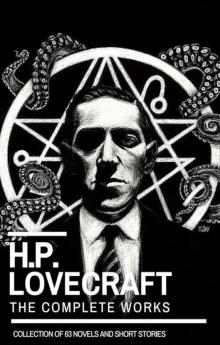 H.P. Lovecraft: The Complete Works
H.P. Lovecraft: The Complete Works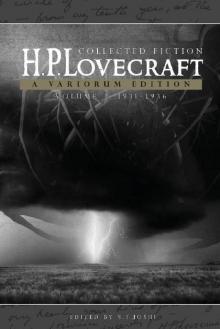 Collected Fiction Volume 3 (1931-1936): A Variorum Edition
Collected Fiction Volume 3 (1931-1936): A Variorum Edition H.P. Lovecraft: The Complete Fiction
H.P. Lovecraft: The Complete Fiction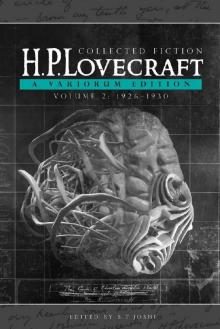 Collected Fiction Volume 2 (1926-1930): A Variorum Edition
Collected Fiction Volume 2 (1926-1930): A Variorum Edition Yog Sothothery - The Definitive H.P. Lovecraft Anthology
Yog Sothothery - The Definitive H.P. Lovecraft Anthology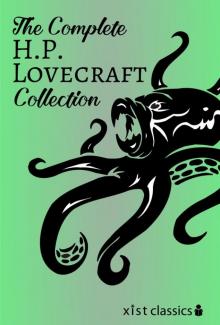 The Complete H.P. Lovecraft Collection (Xist Classics)
The Complete H.P. Lovecraft Collection (Xist Classics)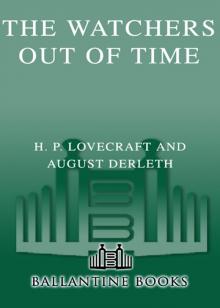 The Watchers Out of Time
The Watchers Out of Time Eldritch Tales
Eldritch Tales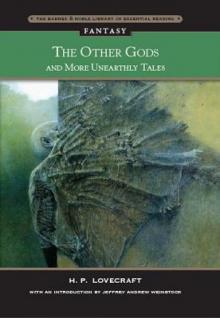 The Other Gods And More Unearthly Tales
The Other Gods And More Unearthly Tales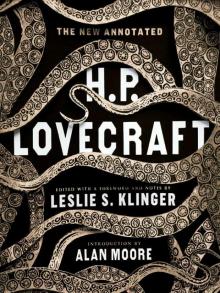 The New Annotated H. P. Lovecraft
The New Annotated H. P. Lovecraft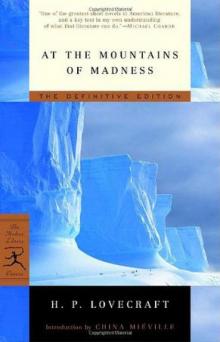 At the mountains of madness
At the mountains of madness Bloodcurdling Tales of Horror and the Macabre
Bloodcurdling Tales of Horror and the Macabre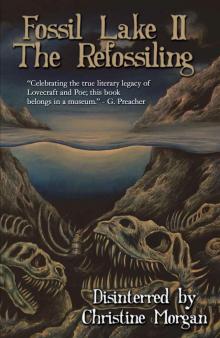 Fossil Lake II: The Refossiling
Fossil Lake II: The Refossiling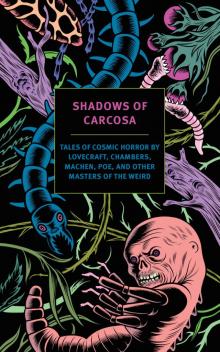 Shadows of Carcosa: Tales of Cosmic Horror by Lovecraft, Chambers, Machen, Poe, and Other Masters of the Weird
Shadows of Carcosa: Tales of Cosmic Horror by Lovecraft, Chambers, Machen, Poe, and Other Masters of the Weird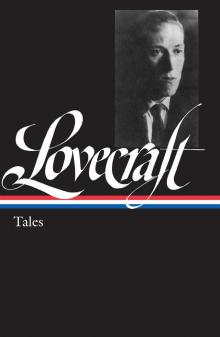 H. P. Lovecraft
H. P. Lovecraft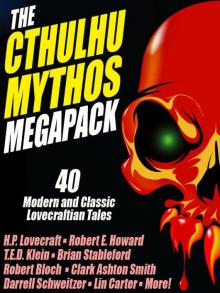 The Cthulhu Mythos Megapack
The Cthulhu Mythos Megapack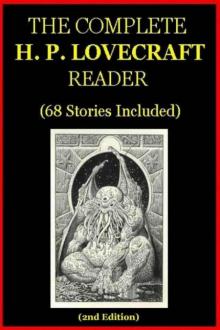 The Complete H. P. Lovecraft Reader (2nd Edition)
The Complete H. P. Lovecraft Reader (2nd Edition)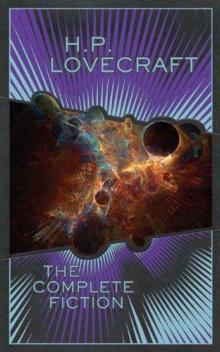 The Complete Fiction
The Complete Fiction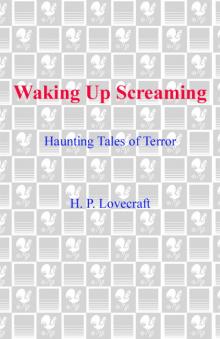 Waking Up Screaming
Waking Up Screaming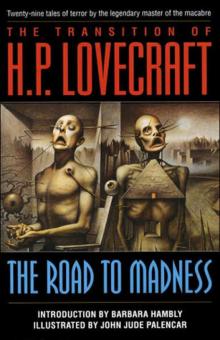 Transition of H. P. Lovecraft
Transition of H. P. Lovecraft![[1935] The Shadow Out of Time Read online](http://i1.bookreadfree.com/i2/04/12/1935_the_shadow_out_of_time_preview.jpg) [1935] The Shadow Out of Time
[1935] The Shadow Out of Time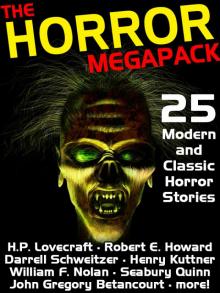 The Horror Megapack
The Horror Megapack